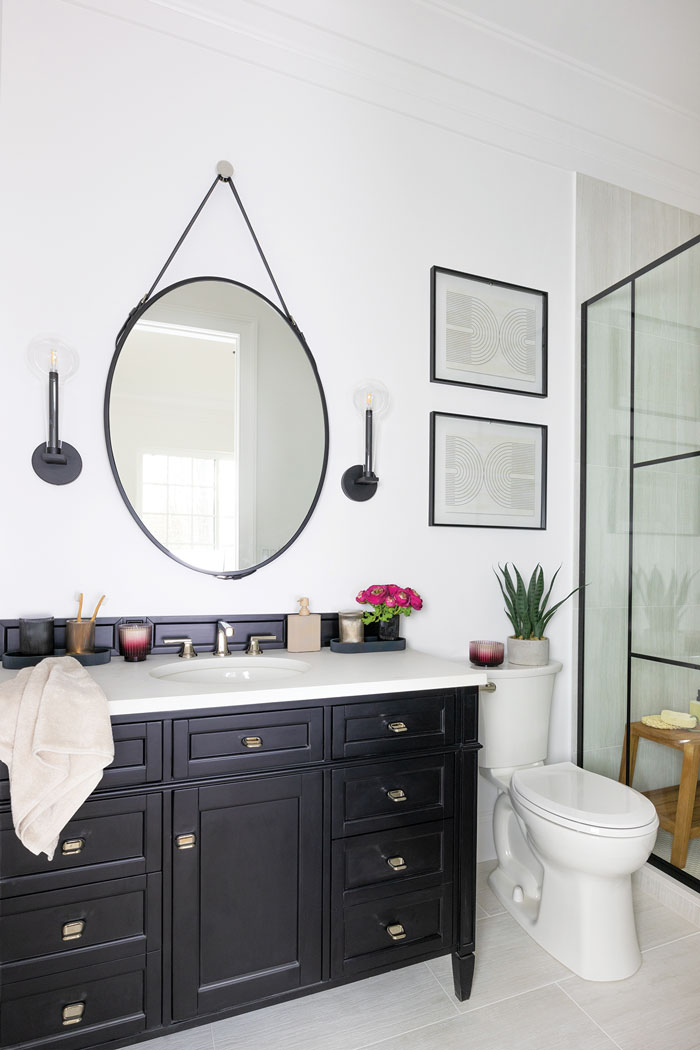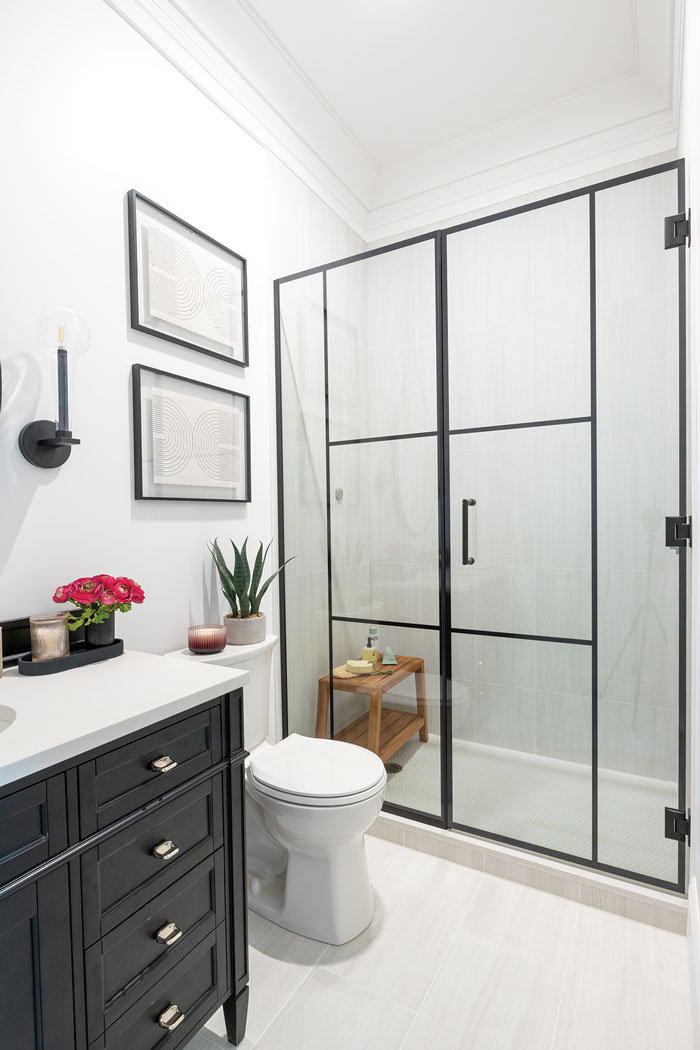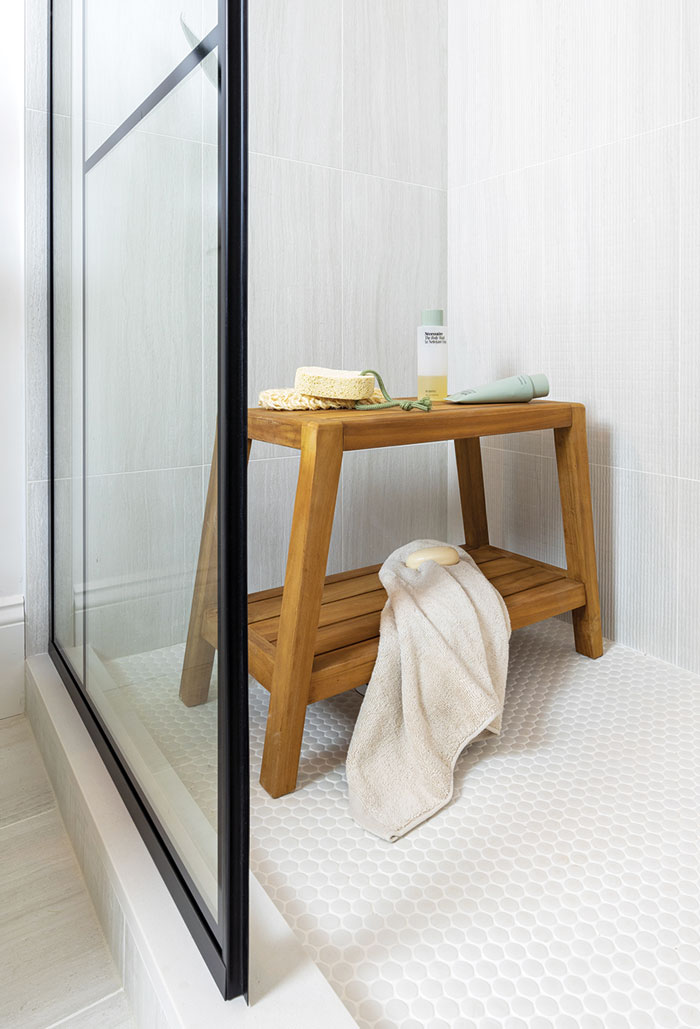Conversations with Kate: Scaling the Heights
Writer Ren MillerHigh ceilings bring special challenges — and opportunities — when designing a room
 The specific requirements and smaller size of bathrooms need special attention in the design phase. You can make a bathroom feel larger with a high ceiling, but that solution brings with it a design challenge. Kate Rumson offers some advice based on a bathroom she designed for the home she is building in central New Jersey. Kate is the founder and creative director of The Real Houses of Instagram (@the_real_houses_of_ig). Design NJ has been sharing updates on her new home in this column.
The specific requirements and smaller size of bathrooms need special attention in the design phase. You can make a bathroom feel larger with a high ceiling, but that solution brings with it a design challenge. Kate Rumson offers some advice based on a bathroom she designed for the home she is building in central New Jersey. Kate is the founder and creative director of The Real Houses of Instagram (@the_real_houses_of_ig). Design NJ has been sharing updates on her new home in this column.
REN: Some early 1900s homes and many new ones have high ceilings, which make even small rooms feel bigger because there is more volume. Your new home has a bathroom on the first floor, which has 10-foot-high ceilings. What did you have to take into consideration when designing and furnishing it?
KATE: Our first-floor guest bathroom is the only one in the house with a 10-foot ceiling so I needed to treat it a little differently from the other ones. Every element needed to feel proportional and properly scaled, so I made sure to order taller shower doors, install large crown molding and select an elongated mirror and wall sconces to fill in some of the extra wall space.
REN: Bathroom showers often have niches to hold toiletries. But some people don’t care for the look or the cleaning challenge of niches. Are there options?
KATE: Yes! I’m not a fan of shower niches and designed all of ours without them. I prefer portable teak benches instead as they provide plenty of space for toiletries and an area to sit down inside the shower. Teak can be used in a shower because of its high oil content, which makes it moisture-resistant and suitable to use outdoors or indoors in wet areas such as a shower.

Larger crown molding, taller shower doors, elongated sconces and a bigger mirror were chosen to be proportional in the bathroom, which has 10-foot-high ceilings.
REN: What are the advantages and disadvantages of using accent/decorative tiles in a bathroom?
KATE: Decorative tile is a great way to make a design statement in a bathroom, but it’s important to keep all other finishes in mind so the space doesn’t look like it has too much going on. In our guest bathroom, I chose shower doors with a prominent black pattern, so I had to find tile that wouldn’t compete yet would still look beautiful and interesting. I chose white tile from the Flumeri collection by Nasco Stone + Tile because of its luxurious texture. It adds sophistication and warmth in a subtle but impactful way.
REN: We’re seeing more shower doors with black frames and/or grids like you described. Do these require more maintenance than a plain shower door?
KATE: I think it depends on the door. I try to avoid products and materials that require additional maintenance (especially in bathrooms), so when it comes to shower doors, I always choose DreamLine® because the black patterns/grids are applied with extra-durable JetGlaze paint on the outside of the glass, making them very easy to clean. Additionally, most DreamLine doors are treated with the company’s proprietary ClearMax coating, which repels water and stains so you don’t have to sacrifice looks for function. Today’s technology and innovation allows us to have both!

The grid on the shower door was applied using JetGlaze technology, a durable black glaze that is easy to clean.
REN: Anything that interrupts the flow of tile, wall covering or a painted wall in a small space can become an eyesore — even something as small as electrical outlets. Are there ways to minimize the appearance of outlets while still being code compliant?
KATE: I recommend installing electrical outlets on the side of bathroom vanities and matching them to the color of the cabinet. I use Square D™ outlets and switches by Schneider Electric. They have a more elevated, screwless design and are available in a variety of colors, making it easy to create a clean and custom look that fades into the background.
REN: What are your tips on making a bathroom look cohesive without being matchy-matchy?
KATE: I love working with Brizo fixtures because each collection represents distinctive style and features coordinating accessories that often include hand showers, towel bars, air gaps, and even drawer knobs and pulls. Every collection is skillfully designed and customizable so that all products work beautifully together, but they do so without looking matchy-matchy.

